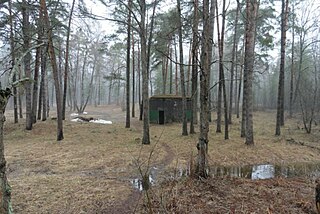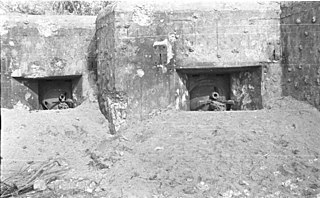 W
WBasis Nord was a secret naval base of Nazi Germany's Kriegsmarine in Zapadnaya Litsa, west of Murmansk provided by the Soviet Union. The base was part of a partnership that developed between Germany and the Soviet Union following German-Soviet Non-Aggression treaty of 1939, along with a broad economic agreement of 1940.
 W
WThe Führerhauptquartier Wasserburg, also known simply as "Wasserburg", was a bunker facility built by the Organization Todt as a front-line Führer Headquarters for Adolf Hitler during the Second World War about four kilometers north-west of Pleskau in the Soviet Union, on a loop of the Welikaja River.
 W
WThe Führerhauptquartier Bärenhöhle was a bunker facility built by the German organization Todt, which was built during the Second World War near Smolensk in the Soviet Union.
 W
WThe 22nd Karelian Fortified Region is a 60 km wide Soviet defensive fortified district to the north of Leningrad that was built in 1928–1932, 1938–1939, 1941–1944 and 1950–1965 in the Soviet part of the Karelian Isthmus amongst other fortified areas constructed around that time in order to defend the western borders of the Soviet Union. KaUR spans the old Finno-Russian border from Valkeasaari near the northern shore of the Gulf of Finland through Lempaala to Nizhniye Nikulyasy Bay on the western shore of Lake Ladoga.
 W
WMaxim Gorky I and Maxim Gorky II were coastal batteries used by the Soviet Union in the Crimea during World War II in the Crimean Campaign. The invading German forces during the Second World War gave the batteries their English name: Maxim Gorky. These are not their Russian names.
 W
WThe Panther–Wotan line was a defensive line partially built by the German Wehrmacht in 1943 on the Eastern Front. The first part of the name refers to the short northern section between Lake Peipus and the Baltic Sea at Narva. It stretched all the way south towards the Black Sea along the Dnieper.
 W
WThe Stalin Line was a line of fortifications along the western border of the Soviet Union (USSR). Work began on the system in the 1920s to protect the USSR against attacks from the west. The line was made up of concrete bunkers and gun emplacements, somewhat similar to, but less elaborate than the Maginot Line. It was not a continuous line of defense along the entire border, but rather a network of fortified districts, meant to channel potential invaders along certain corridors.
 W
WVolgograd, formerly Tsaritsyn (1589–1925), and Stalingrad (1925–1961), is the largest city and the administrative centre of Volgograd Oblast, Russia. The city lies on the western bank of the Volga, covering an area of 859.4 square kilometres, with a population of over 1 million residents. Volgograd is the fifteenth-largest city in Russia, the second-largest city on the Southern Federal District, and the fourth-largest city on the Volga.